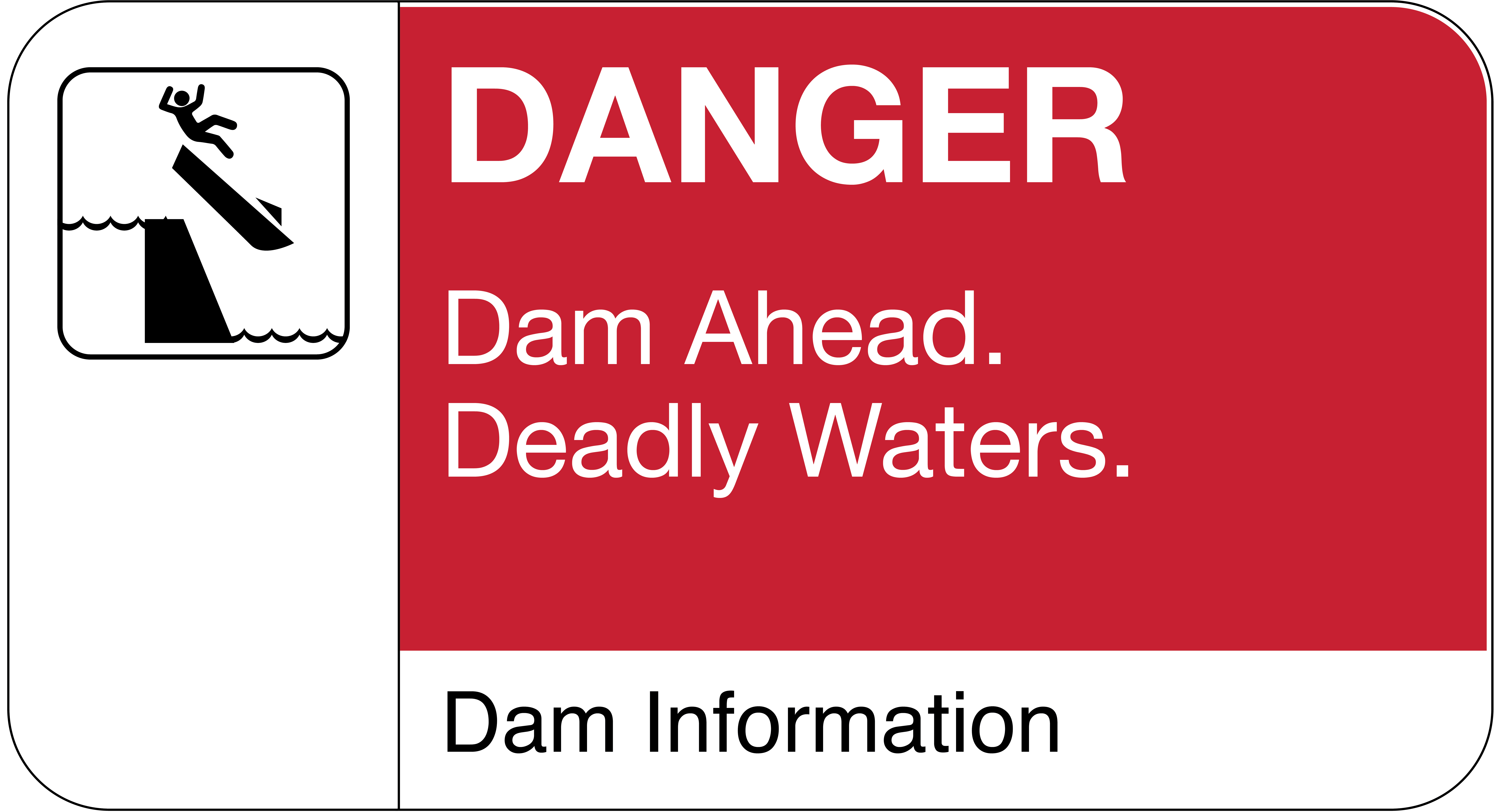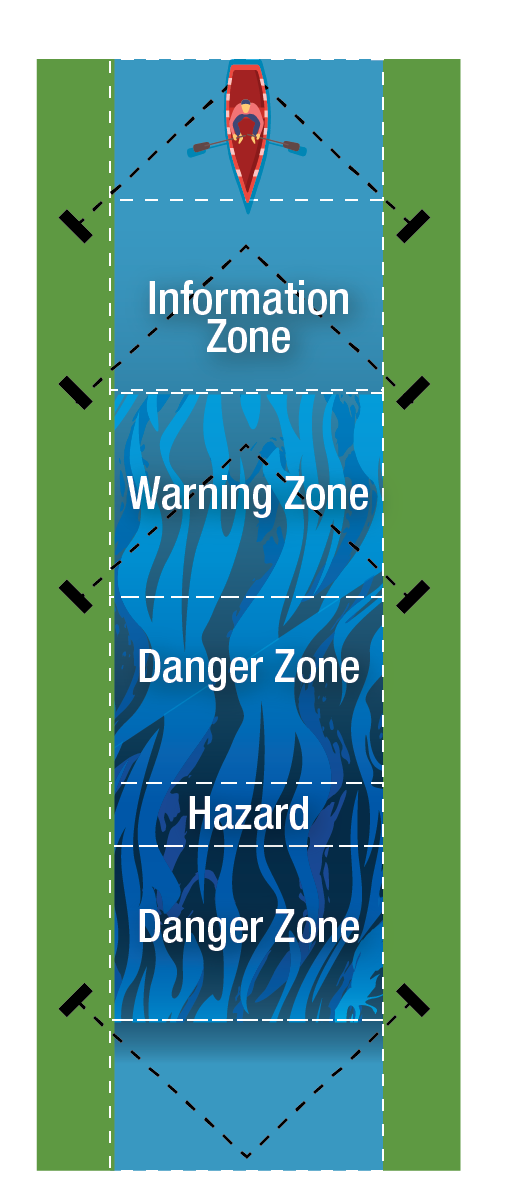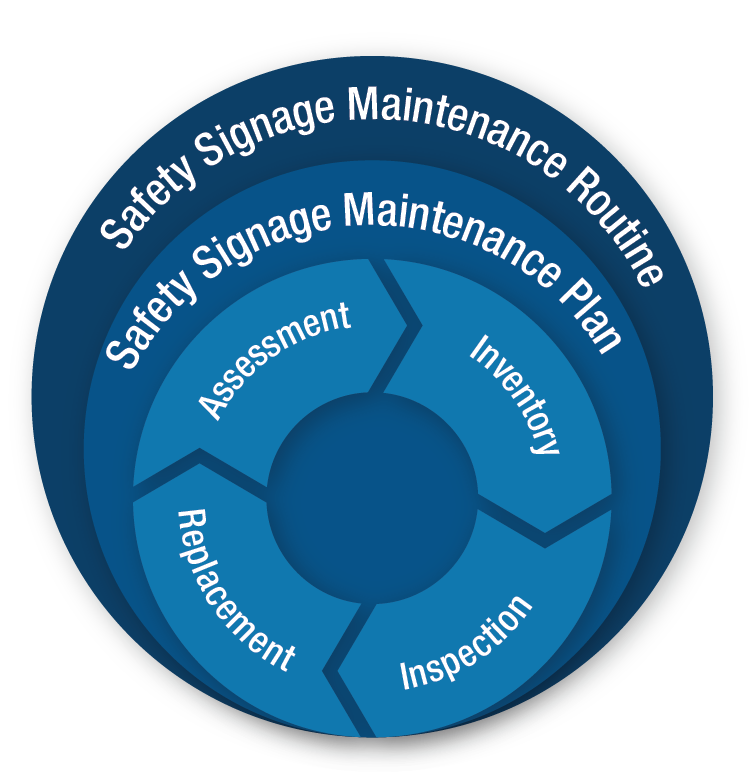FEMA’s Dam Safety Warning Signs Best Practices is a compilation of existing leading practices from industry leaders including the United States Society on Dams (USSD), Association of State Dam Safety (ASDSO), U.S. Army Corps of Engineers (USACE), U.S. Coast Guard (USCG), Federal Energy Regulatory Commission (FERC), Federal Highway Administration (FHA), Bureau of Reclamation (Reclamation), Canadian Dam Association (CDA), American International Standards Institute (ANSI) and more.

For errors and suggestions, please contact the Dam Safety team. We will include an errata sheet and reviewed suggestions for improvement. We will update the errata sheet annually.
The best practices listed bleow have been developed to address the need to accurately and consistently warn against the hazardous conditions resulting from the general operation of dam facilities nationally.
View Fact Sheet
Assessing Public Risks at Dams
Dam owners and operators are responsible for reducing risk of failures and incidents caused at and around their dam. Therefore, it is essential to assess the public health and safety risks at and around a dam facility. This section outlines the process for identifying potential risks present at the facility, ranking these risks based on frequency and severity and leveraging clear and consistent safety signage techniques to mitigate these risks. Additional risk assessment practices should be followed for general operation and maintenance of your dam.

Messaging Guidance
One of the main challenges of developing effective safety signage is ensuring that the message is clearly and easily understood by a wide range of audiences. This section identifies the challenges associated with messaging, how to determine the appropriate language and content and provides additional techniques for properly conveying a message. The following are items to consider when developing the messaging of dam safety signage.

Design Standards
Dam safety signage should be designed to clearly and concisely convey a message to provoke action from the public. Therefore, it is good practice to harness the color patterns, formatting and overall design standards of other well-known public safety signage guidelines to create familiarity with the message the dam safety signage is aiming to convey.

Location Guidance and Installation
A dam owner’s plan for sign placement should be developed individually for each project sight based on the site-specific parameters. This section identifies appropriate sizing, location, viewing and mounting practices for sign legibility from both land and water viewing.
DETERMINING SIGN PLACEMENT
- Create a large enough sign so that viewers have ample time to avoid a hazard.
- Consider potential obstruction from all seasons (foliage growth, flooding, etc)
- Consider the angle of vision and location the viewer is approaching the sign from.

Safety Signage Maintenance Routine

A safety signage maintenance routine should not only comprise of creating a detailed and robust maintenance plan but should also involve continually updating and assessing your maintenance plan based on changing situations and discoveries. Through this continuous cycle of improvement, safety signage will drastically reduce public risks to potentially dangerous situations around dams. Graphic 5 identifies the key pillars to a successful maintenance route.


